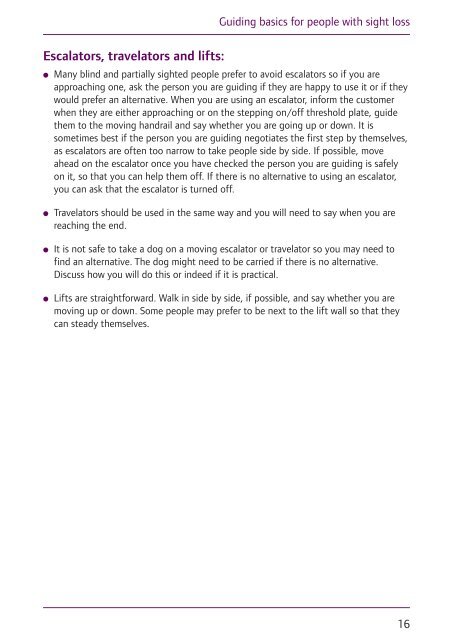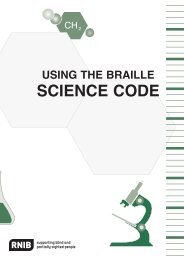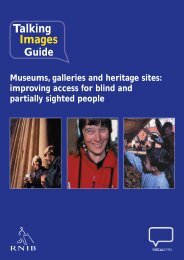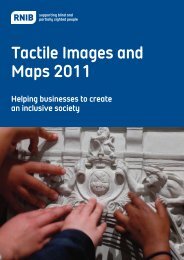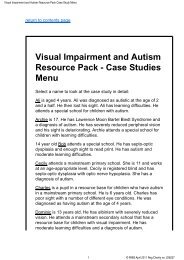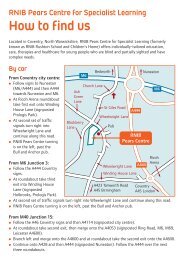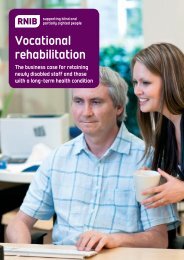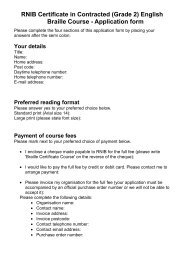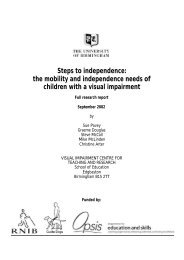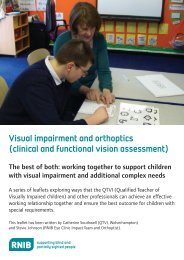The retail experience - RNIB
The retail experience - RNIB
The retail experience - RNIB
Create successful ePaper yourself
Turn your PDF publications into a flip-book with our unique Google optimized e-Paper software.
Guiding basics for people with sight loss<br />
Escalators, travelators and lifts:<br />
l<br />
Many blind and partially sighted people prefer to avoid escalators so if you are<br />
approaching one, ask the person you are guiding if they are happy to use it or if they<br />
would prefer an alternative. When you are using an escalator, inform the customer<br />
when they are either approaching or on the stepping on/off threshold plate, guide<br />
them to the moving handrail and say whether you are going up or down. It is<br />
sometimes best if the person you are guiding negotiates the first step by themselves,<br />
as escalators are often too narrow to take people side by side. If possible, move<br />
ahead on the escalator once you have checked the person you are guiding is safely<br />
on it, so that you can help them off. If there is no alternative to using an escalator,<br />
you can ask that the escalator is turned off.<br />
l<br />
l<br />
l<br />
Travelators should be used in the same way and you will need to say when you are<br />
reaching the end.<br />
It is not safe to take a dog on a moving escalator or travelator so you may need to<br />
find an alternative. <strong>The</strong> dog might need to be carried if there is no alternative.<br />
Discuss how you will do this or indeed if it is practical.<br />
Lifts are straightforward. Walk in side by side, if possible, and say whether you are<br />
moving up or down. Some people may prefer to be next to the lift wall so that they<br />
can steady themselves.<br />
16


